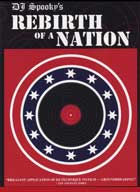
Rebirth of a Nation: DJ Spooky That Subliminal Kid 2004
Distributed by H2O Films c/o Third World Newsreel, 545 Eighth Avenue, 10th Floor, New York, NY 10018; 212-947-9277
Produced by Paul D. Miller and John W. Hyde
Directed by Paul D. Miller
DVD, color and b&w;, 100 min.
Jr. High - Adult
African American Studies, Education, Film Studies, History
Date Entered: 08/27/2010
Reviewed by Linda Alkana, Department of History, California State University Long BeachIn DJ Spooky’s Rebirth of a Nation, performance artist and musician Paul D. Miller, aka DJ Spooky, applies the musician’s DJ techniques to cinema, as he deconstructs and remixes D. W. Griffith’s 1915 groundbreaking film Birth of a Nation. That controversial silent movie, about the Civil War and the Reconstruction Period that followed, is notable for both its artistic and innovative film techniques and its racism and support of the Ku Klux Klan. Miller’s remix of the film lets the audience appreciate the former and shudder at the latter, while he demonstrates the long term implications of both the artistry and the content.
Originally commissioned as a live multimedia performance, this DVD version features an ethereal soundtrack by the Kronos Quartet that mixes, among other things, hip hop beats, blues, cymbals and a violin. DJ Spooky’s Rebirth adds captions, voice-overs, and digitized imagery to the original Birth of a Nation to reveal a more complicated subplot, which Miller argues shaped film making and media to the present. Outwardly, the Civil War was about a struggle between the agrarian South and an industrializing North. Yet, Miller argues, it was about a class struggle that continues until today. Miller demonstrates how Griffith manipulates his images, creating scenes of grief or revenge, which bind the audience to his white protagonists and his vision of America—a paradigm of unity, marked by struggles between good guys versus bad guys in defense of the status quo. He sees in Griffith’s lengthy footage of Lincoln’s assassination, “a subtle manipulation” of his audience that sets the stage for the media coverage of, among other things, the lead up to war in Iraq. Without being strident or sarcastic, Miller draws a link between the vision of America that Griffith (and, incidentally, Woodrow Wilson, a champion of Griffith’s film) presents and how he presents it.
DJ Spooky’s Rebirth of a Nation would work well in a general or academic context. Its production value is high and its multimedia presentation is creative. Miller’s analysis of the media is insightful and his interpretation of history well supported. By being clear about his agenda, Miller allows his audience to understand that Griffith, too, was far from neutral. DJ Spooky’s Rebirth of a Nation reveals the power of media to be a political tool and how easily a revisionist interpretation of history can be introduced to the mainstream. Miller’s revised version of Griffith’s film demonstrates that there are many versions of a story. Griffith’s Birth of a Nation reinterpreted by a 21st century African American artist is much different than Griffith imagined. Miller ends his film with a clip of D. W. Griffith asking “what is truth?”